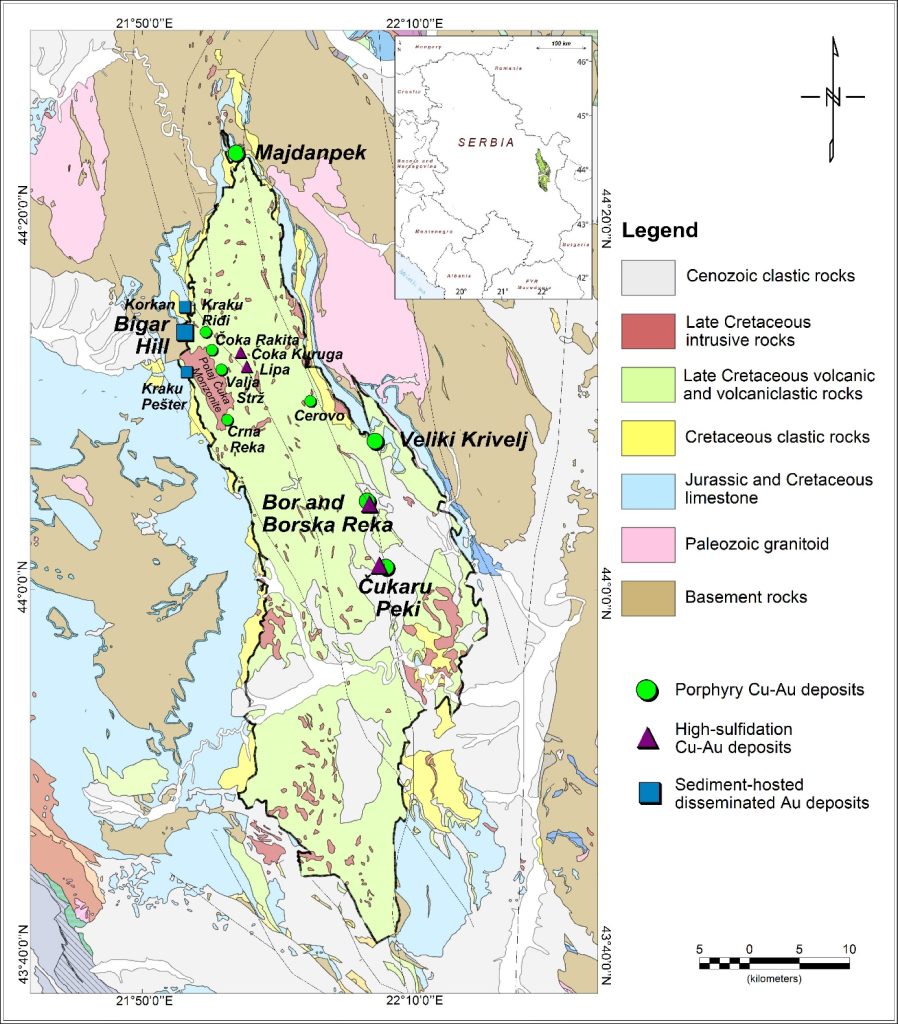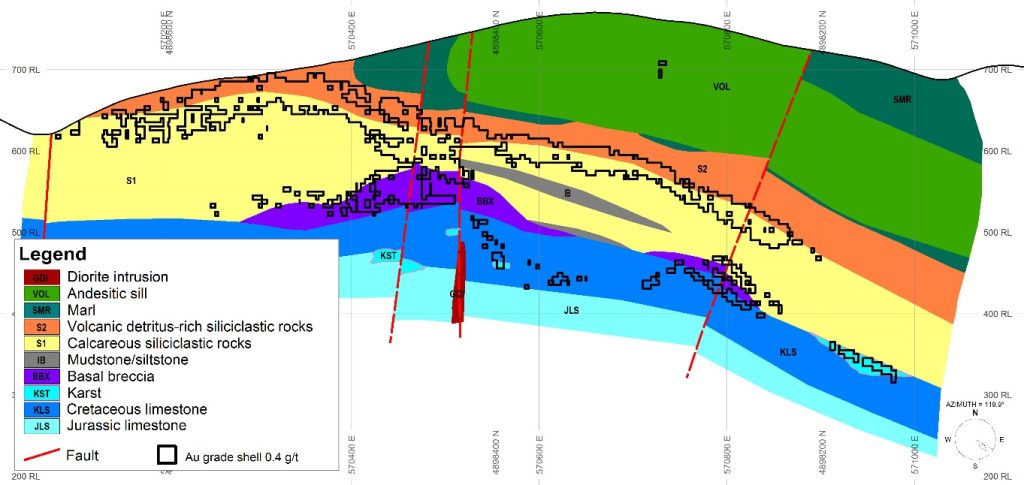Project Information
- Ore Deposit: Carlin-type
- Commodity: Gold
- Research Themes: Gold Deposits, Regional Metallogeny
- Location: Timok Region, eastern Serbia
- Project Status: Completed
- Start Date: 2013
- End Date: 2019
The Timok Magmatic Complex (TMC) is a well-endowed mineral district in Serbia that hosts world-class Cu-Au porphyry deposits (Majdanpek, Veliki Krivelj, Borska Reka) and high-sulfidation deposits (Bor, Čukaru Peki). Recent exploration activities on the northwestern margin of the TMC have led to the discovery of three sediment-hosted disseminated gold deposits (SHDG). The largest one, Bigar Hill deposit contains 1.48 Moz of gold at an average grade of 1.19 g/t Au of indicated reserves. SHDG deposits represent a previously unrecognized style of gold mineralization within the TMC and the central Balkan Peninsula - although they share many characteristics with the Carlin-type and distal disseminated gold deposits of Nevada, US. This project was completed as an MSc thesis and is one of the many projects that were done undertaken within the WTMP - Western Tethyan Metallogeny Project (Phase 1) umbrella.

Gold distribution at the Bigar Hill gold deposits, and their associated hydrothermal mineralogical, geochemical and stable isotope alteration features, were examined to reconstruct the structural and stratigraphic controls on hydrothermal fluid flow. Mineralogical compositions of the host rocks that had an abundance of reactive Fe in carbonates and silicates contributed to the precipitation of hydrothermal pyrite with associated gold.
The Bigar Hill stratigraphy encompasses Late Jurassic to Early Cretaceous limestone unconformably overlain by a calcareous clastic sedimentary sequence (unit S1) comprising breccia, siltstone, sandy limestone, and calcareous sandstone. Late Cretaceous volcanic detritus-rich sandstone package (unit S2) unconformably overlies unit S1. Primary sparry carbonate cement, mainly ferroan calcite and to a lesser extent (ferroan) dolomite are characteristic features of both S1 and S2 units. Marl lies conformably over the S2 unit, and the andesitic sill intruded it.
Gold mineralization is principally stratabound, located along two stratigraphic contacts. The contact zone between units S1 and S2 is a major mineralized horizon. The other mineralized corridor lies along the unconformable contact between limestone and the S1 siliciclastic rocks. Acidic hydrothermal fluids likely exploited the enhanced porosity and permeability of preserved weathering crusts, brecciated zones, and karst along the unconformities, further creating secondary porosity by dissolving host rock carbonate cement. Although stratigraphic features are considered highly influential on the spatial distribution of ore, the regional structural framework and syn-mineralization faults reactivations are thought to be necessary to allow mineralizing fluids to permeate favorable stratigraphic horizons. A 3D spatial analysis of stratigraphic contacts and changes in the thickness of sedimentary packages suggests that the controls of the ore body geometry are previously unrecognized sub-vertical structures that channeled upwelling metal-bearing fluids. Fluids then spread laterally along the contact zones between the sedimentary packages. Two recognized structural trends, NW-SE and NE-SW match the major gold mineralization trends.

Analysis of δ18O and δ13C divergence from the background marine values of the Bigar Hill calcareous host rocks reveal hydrothermal fluid flow pathways that confirm the existence of steep faults within the southern segment of the deposit. These stable isotopic values also highlight the extent of fluid alteration near favorable contacts for the formation of gold mineralization.
U-Pb zircon geochronology indicates that magmatism in western TMC spanned ca. 6 million years during the late Cretaceous (83.8-77.7 Ma). Due to difficulties with direct dating of the SHDG mineralization, we used the K-Ar technique applied to illite that formed during the same hydrothermal event that resulted in pyrite and gold precipitation. Hydrothermal illite from the altered and mineralized S2 sandstone and andesite is approximately 79 Ma. The isotopic dates from the Bigar Hill deposit and the western TMC jointly indicate that deposit-scale hydrothermal and magmatic activities were largely contemporaneous during Late Cretaceous, with alteration immediately post-dating magmatism.
https://open.library.ubc.ca/cIRcle/collections/ubctheses/24/items/1.0378656



